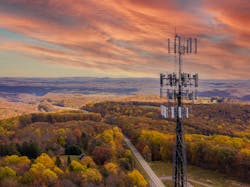Advocacy got wireless into the Infrastructure Investment and Jobs Act
If you don’t subscribe to any industry-related blogs, make it a not-too-late New Year’s resolution to do so. I subscribe to several, and one I read at the tail end of last year was enlightening. In an entry on Belden’s Smart Buildings Blog, the company’s global account director for service providers and 5G infrastructure Steve Carroll describes the benefits of the recently signed-into-law Infrastructure Investment & Jobs Act (IIJA). He also recalls the activism that got wireless broadband included in the act, along with wired broadband.
“During the pandemic, stories were reported about schools passing out laptops and tablets to students who couldn’t use them because they didn’t have access to reliable internet service at home,” he says. “In some cases … students drove to parking lots and other outdoor areas where they could access stable WiFi from nearby buildings and participate in virtual learning or finish homework.”
He further explains the original bill that eventually became the IIJA included funds for wired, but not wireless, broadband. That was until Wireless Infrastructure Association president and former FCC chairman Jonathan Adelstein lobbied Congress to include mobile and fixed wireless in the bill.
Part of Adelstein’s argument was the physical and/or financial impracticality of installing fiber in some rural locations.
“Wireless may be a less expensive way to provide the same level of connectivity—with appropriate download and upload speeds—to areas where wired broadband is difficult or too expensive to roll out,” Carroll writes, paraphrasing Adelstein’s persuasive argument.
“Of the $65 billion dedicated to wired and wireless broadband, $42.45 billion will fund projects independently approved by each state,” Carroll explains. “When projects use state funding, they must provide download speeds of 100 Mbits/sec and upload speeds of 20 Mbits/sec. Projects that can be completed quickly will receive priority consideration so that strong impacts can be made right away.”
A statement from The White House on the IIJA declared, “Broadband internet is necessary for Americans to do their jobs, to participate equally in school learning, health care, and to stay connected. Yet, by one definition, more than 30 million Americans live in areas where there is no broadband infrastructure that provides minimally acceptable speeds—a particular problem in rural communities throughout the country.”
No doubt some of those rural communities represent geographies for which deploying wireless connectivity systems is more practical than installing cable. Years ago the term ITS, which stands for information transport systems, was commonly used to characterize the communications systems you design, build, and use. I remember attending one conference during which a speaker emphasized that the method of transport is secondary. Wired or wireless (or both, because wireless does require wires, after all), the important thing was that the signal is successfully transported from its source to its destination. The inclusion of broadband wireless in the IIJT is a case in point.
WHAT’S NEW
INTERNET OF THINGS
NETWORK CABLE
NETWORK DESIGN
CABLING INSTALLATION
TRAINING AND EDUCATION





